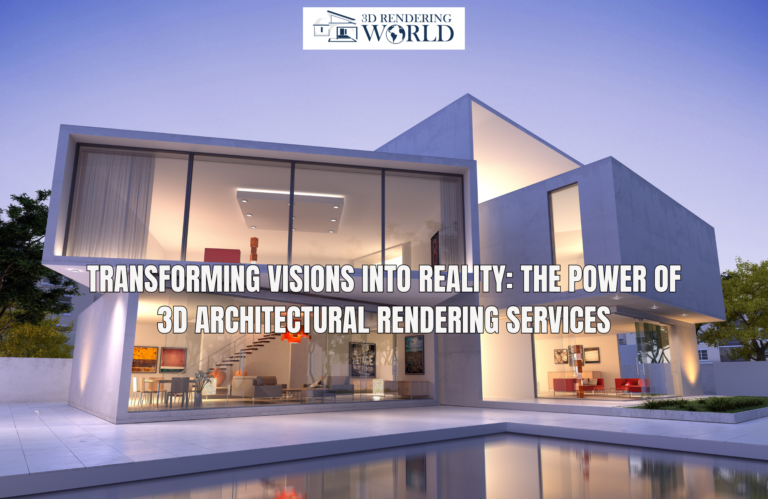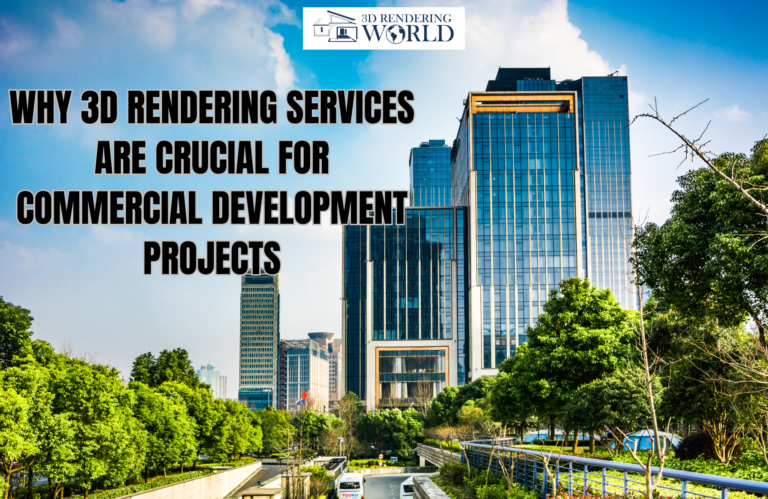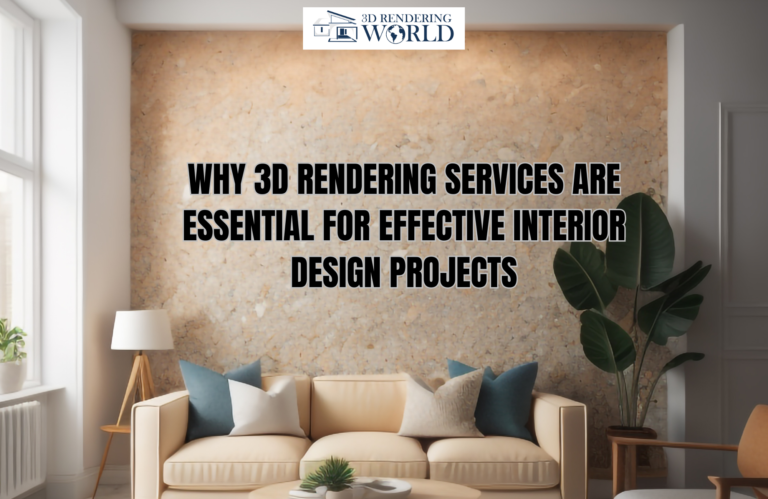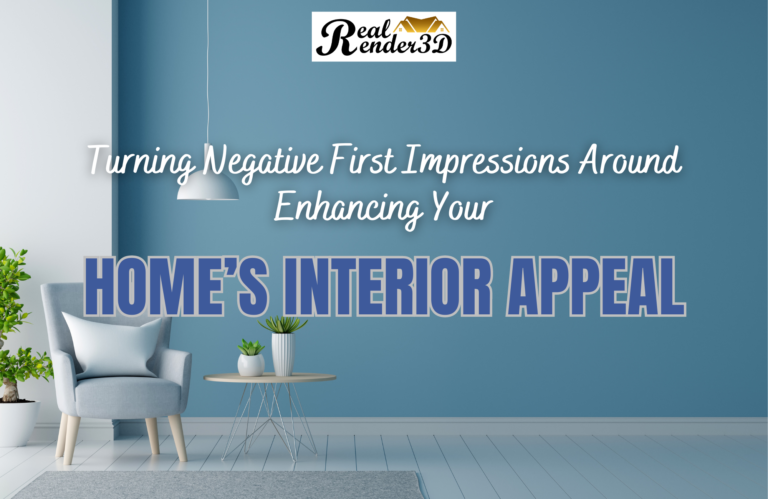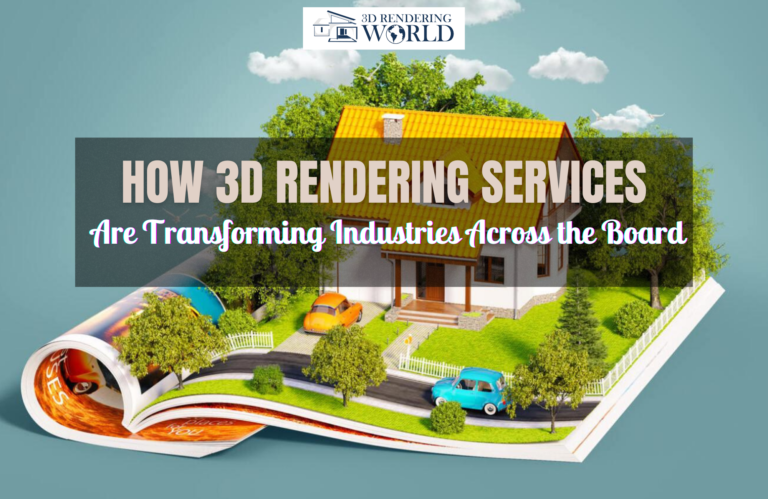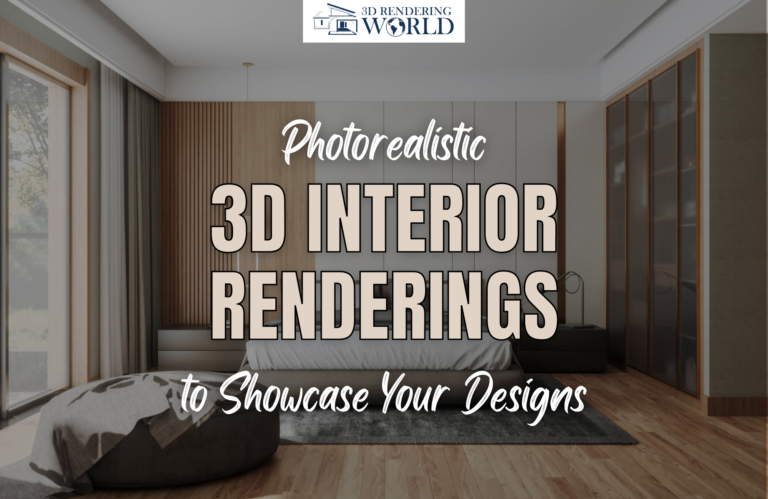Introduction
The real estate industry has undergone a digital transformation in recent years. Real estate professionals are increasingly utilizing 3D rendering services to create immersive virtual tours for marketing properties online. 3D virtual house tours allow potential buyers to explore a property in detail without physically visiting it. In this blog post, we will examine the power of 3D and the benefits 3D rendering services provide for real estate marketing.
An Overview of 3D Rendering Services

3D rendering is the process of generating photorealistic 3D models and images from 2D designs. It brings architecture and interior designs to life through 3D visualization. Real estate 3D rendering services use 3D modeling software to construct digital 3D models of homes, buildings or land plots.
These 3D models are then rendered into fully interactive 3D virtual tours. The tours showcase the exterior and interior of properties in incredible detail with high quality 3D graphics. Everything is customizable, from lighting to materials and camera angles. The powerful visuals give potential buyers an informed idea of what the property looks like.
Benefits of Using 3D Rendering for Real Estate
1. Increased Visualization for Property Viewing
3D virtual tours provide an immersive visualization of the property. Viewers can take a virtual walkthrough to gain a realistic experience of the space. The interactive 3D environment allows you to explore every corner and room as if physically present. This level of detail allows buyers to make informed decisions regarding purchases.
2. Ability to View Properties Remotely
Real estate virtual tours powered by 3D rendering technology allow anyone to view a property from anywhere in the world. Home buyers no longer need to travel to crowded open houses. They can access 3D virtual tours online conveniently through smartphones, tablets, laptops or VR headsets. Remote viewings make the home search process efficient.
3. Engaging Visual Marketing

Real estate thrives on visual media. 83% of human learning happens visually. 3D virtual tours are highly engaging forms of visual content. They grab the attention of tech-savvy potential buyers on social media and listing sites instantly. Real estate companies embracing 3D virtual tours for marketing gain a competitive advantage in capturing buyer mindshare.
4. Flexible Camera Angles
3D virtual tours allow flexible control of camera angles and lighting. Real estate agents can highlight the most impressive areas of a property by focusing on key viewpoints. Camera paths can be predefined or interactive. This showcases the property in the best possible way for virtual viewing.
5. Compatibility Across Platforms
The 3D virtual tour experience translates seamlessly across desktop and mobile. Users can easily access tours via website links or QR codes. The tours work smoothly across iOS, Android, Windows, Mac, tablets, mobile VR headsets and more. Compatibility across platforms improves accessibility.
Real Estate Marketing with 3D Virtual Tours
Here are some of the key ways real estate professionals can leverage 3D virtual tours for marketing:
1. Website Listings
Feature 3D tours prominently on property listing pages of your real estate website. Allow site visitors to launch the tours with one click for an interactive preview.
2. Social Media Marketing
Share 3D virtual tour videos and images on social media platforms like Facebook, Instagram and Twitter. Use the visual content in targeted social ads and email campaigns as well.
3. Property Brochures
Insert 3D renderings and QR codes linking to the virtual tours in print brochures for engagin visual marketing.
4. Digital Advertising

Incorporate interactive 3D tour banners and videos into digital advertising and PPC campaigns. Retarget the tours for conversions.
5. Email Marketing
Embed interactive 3D tour images and videos in email campaigns. Capture buyer attention amidst crowded inboxes.
6. Property Portals
Submit 3D virtual tours to major real estate portals and listing sites. Increase visibility and clicks from motivated home searchers.
Why Choose a Professional 3D Rendering Service?
Creating interactive 3D virtual real estate tours requires professional 3D rendering expertise. Here are some benefits of choosing an experienced 3D visualization company:
- Use of industry-leading 3D modeling and rendering software for optimal quality. Real-time render engines like Unreal Engine provide photorealistic graphics and immersive interactions.
- Skilled 3D artists and modelers construct accurate virtual models of real-world properties based on 3D floor plans and documents. Every detail is perfected.
- Lighting design experts add realistic lighting, shadows and textures to elevate visual quality.
- Smooth VR-ready experiences are optimized for desktop, mobile and virtual reality headsets via multi-platform compatibility.
- Customizable interactive elements are added to engage viewers, like hotspots, menus, slideshows, animations, ambient audio and more.
- SEO optimization and multimedia integration provide maximum visibility across channels.
- End-to-end development includes 3D modeling, rendering, interactive programming, hosting, maintenance and marketing.
The Future of 3D for Real Estate

3D visualization has enormous potential for revolutionizing the real estate industry. Some emerging technologies that will shape the future include:
- Augmented and virtual reality – Immersive 3D experiences through AR/VR allow buyers to virtually tour properties from anywhere. Real estate AR apps will provide new engagement possibilities.
- 3D printing – Architects are already using 3D printing to create complex real estate models. In the future, properties could potentially be constructed using large-scale 3D printing.
- Drone photography – Drones can photograph properties aerially for creating 3D renderings with detailed aerial views.
- Automated 3D modeling – AI and photogrammetry can automate 3D model generation faster and cheaper using construction plans or drone photos.
- Interactive digital twins – Hyperrealistic digital twins of entire cities and properties will allow remote exploration. Real-time digital twins linked to IoT sensor data will enable advanced smart city simulations.
Conclusion
In closing, advanced 3D rendering services enable real estate companies to create visually immersive virtual tours for properties. Interactive 3D virtual tours provide remote buyers with an in-depth preview of homes and buildings. Real estate professionals should leverage 3D visualization widely for engaging online marketing. With technology advancing rapidly, 3D and AR will reshape tomorrow’s real estate business.
Frequently Asked Questions
The key benefits are increased visualization and immersion for remote viewers, highly engaging and flexible marketing assets, and the ability to showcase details and construction progress. 3D allows buyers to explore properties in depth from anywhere.
Specialized 3D artists construct detailed property models using architectural plans, measurements, photos, and design documents as references. Industry-leading 3D software builds photorealistic digital models of home interiors and exteriors.
Top 3D modeling programs used in real estate include Autodesk 3ds Max, Blender, SketchUp, Revit, and Cinema 4D. Real-time render engines like Unreal Engine create interactive 3D environments.
Yes, 3D virtual tours work on smartphones, tablets, laptops, and desktops. Users can navigate tours via mouse or touch controls. VR headsets provide added immersion but are not required.
For a 2,000 sq. ft. home, modeling takes 1-2 weeks. Additional time is required for rendering, programming interactivity, animations, hosting, and marketing integrations. Most tours are delivered in 4-6 weeks.
Look for industry experience, portfolio quality, range of real estate services, advanced technologies used, multi-format deliverables, and expertise bringing tours to life with lighting, textures, and interactions.
Yes, 3D rendering companies can leverage virtual staging software to furnish empty 3D spaces and enhance tours. This provides a complete visualization of the potential of the property.
The upfront cost is higher due to the labor involved. But the visual impact and marketing capabilities provide lasting value across channels. The flexible digital assets generated make the investment very worthwhile.



